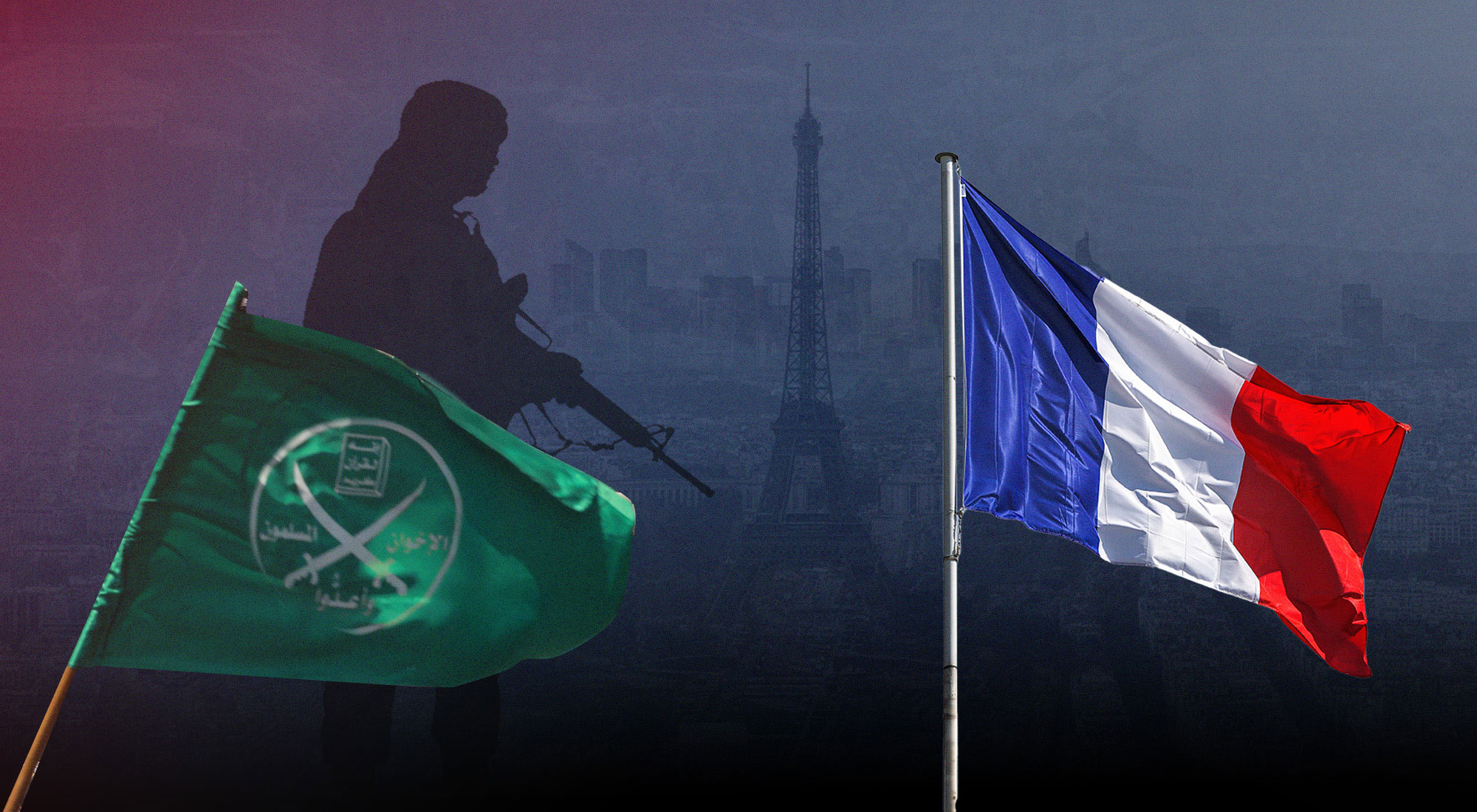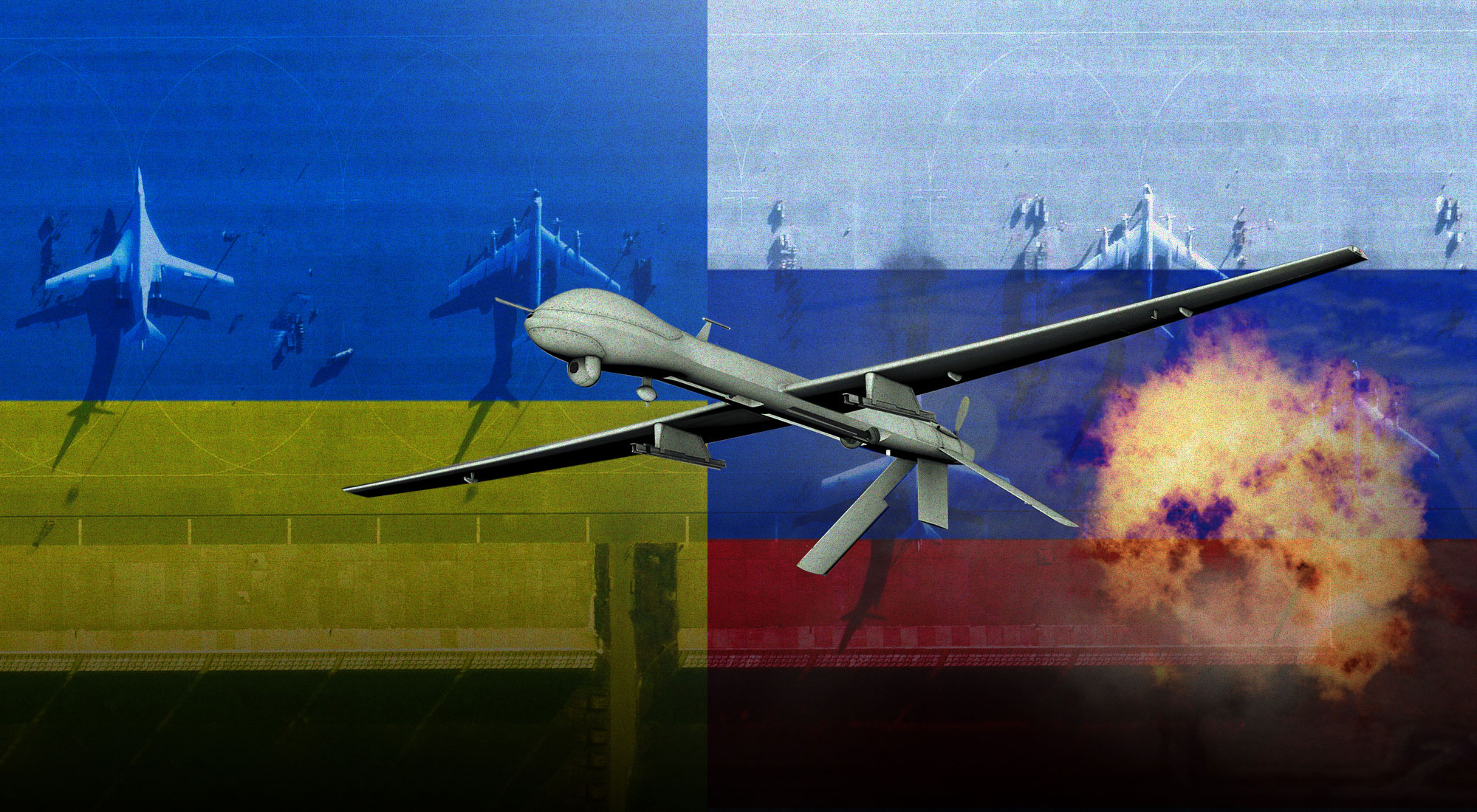The nuclear bomb is one of the few weapons in the world that can claim to have spilled more ink than blood. Thousands of books written on the subject debate the validity of the original concept of ultimate chaos deterring mankind from provoking a global conflict.[1] Its tactical and strategic raison d’être remains unresolved.
The American nuclear bombing of Japan in 1945 and the establishment of a managed nuclear world order (IAEA, NPT, UN Security Council, CTBTO)[2] have not deterred warmongers from launching invasions, starving besieged populations, committing genocide, carrying out terrorist attacks, committing war crimes or provoking humanitarian crises. Israel’s nuclear arsenal did not prevent the Yom Kippur War, the First and the Second Intifada, and the Gaza War. The Uppsala Conflict Data Program estimates that since the Hiroshima tragedy there have been 270 to 300 state and non-state conflicts worldwide.[3]
Nuclear deterrence does not bring peace. It does not prevent frontal clashes and it does not speed up peace settlements. Countries wage war despite threats like Russian President Vladimir Putin’s words, “We will use them if necessary”[4] over Ukraine. At best, conflicts are limited to what the military calls “acceptable damage.”[5] When the Russian army targets the Zaporizhzhia power station and has its bombers modified to carry nuclear warheads, the U.S. limits the firepower of weapons delivered to the Ukrainians. This means that the war will continue as is, with several hundred people killed every day, and not escalate.[6]
Assuming the Worst
The atomic bomb embodies both the desire for hyper-power and the fear of chaos, and there has been no shortage of initiatives to curb its proliferation.[7] The Treaty on the Non-Proliferation of Nuclear Weapons (NPT) came into force in 1970, signed by 191 nations. Arab countries have not been left behind. In the 1960s,[8] Egypt promoted the creation of a Middle East Nuclear-Weapon Free Zone (MENWFZ)[9] to protect the Middle East from nuclear proliferation. This did not prevent Israel from developing its first bombs at a secret site in Dimona (Beer Sheva).
In 1974, the Shah of Iran adopted the Egyptian idea of creating a nuclear weapon-free zone (ZEAN),[10] but it did not materialize. After the Israeli bombing of Iraq’s Osirak reactor,[11] several Arab chancelleries tried to resolve the issue of access to the atom. In 1991, Cairo called for a ban on weapons of mass destruction and demanded that Israel’s arsenal be exposed — in vain. It was as if the West had turned a deaf ear to Arab demands, preferring to entrust the IAEA with organizing disarmament forums and verifying suspected sites.[12] Once again, in vain: the only constant in these meetings has been, in the end, their ineffectiveness.[13]
The West has been ambivalent about nuclear energy. It has not responded to Arab diplomatic proposals and has not been very tough in condemning countries that have been tempted by military nuclear capabilities: Libya, Iraq, Syria, or Iran, whose military program was discovered by the IAEA in 2002-2003. Despite its ambivalence the West does fear insane behavior of a leader who appears ready to bring about the end of the world and considers that low and medium intensity conflicts increase the risk of escalation. The worst-case scenario for the West would be the use of tactical nuclear weapons, i.e., limited power (10 to 25 kilotons) with a ballistic capability of a hundred kilometers.[14] What would happen if the Afghan Taliban acquired tactical nuclear weapons? Would they use them against the local branch of the Islamic State group (IS-K)? How many warheads would have to be launched to defeat radical fighters hiding in deep, inaccessible mountains? What operational effectiveness would be recommended, and for what level of environmental disaster?
Figure 1: Comparison of Nuclear Weapons

Source : https://bitly.ws/3gpmV
The West believes it can manage a war, for example, in Ukraine, because it considers itself to have the insight and maturity to avoid a nuclear conflagration. Anyone else who aspires to this capacity must demonstrate clarity and serenity to qualify for membership in the club of the powerful.
While the West enjoys the power of the atom and poor countries — suspected of being “irrational” or “slippery” — are exhausted by endless asymmetric wars, little attention is paid to India and Pakistan, two major nuclear powers fighting over control of Kashmir. This illustrates the differences in approach between the defenders of deterrence, who believe that the atom fulfills its deterrent mission and prevents the conflict from degenerating, and the detractors of deterrence, pointing out that these two countries have behaved beyond reproach. Meanwhile, Islamabad could be criticized for being unstable because of its alleged involvement in Afghanistan, and India for having mutated from Gandhian pacifism to unabashed nationalism.
The Vexation Strategy
Nuclear deterrence is, above all, vexatious, a notion too often overlooked in studies. Yet it has importance. One can imagine a country, say a poor, landlocked and indebted nation, that develops a weapon of unprecedented power — the ultimate weapon, the one that could replace all others. How would Washington, Moscow, Beijing, or Brussels react if the president of that country refused to share the new technology on the grounds that the superpowers are unreasonable and risk violating the principles of precaution and military proportionality? How would the nuclear giants react if they were deprived of this capability in the name of non-proliferation? Perhaps then the great powers would understand what it means to be offended: to be suspected of irresponsibility and forced to justify oneself and show their credentials in the vein hope of obtaining a new technology.
Access to the atom granted as a reward for good behavior raises the question of eligibility: the ability of a country to manage endogenous factors including terrorism, secessionism, and regional ambitions. This form of nuclear elitism is asserted with so much authority that we forget that the exemplarity on which the powerful pride themselves is shaky. On several occasions, humanity has come within a hair’s breadth of catastrophe. The history of nuclear power is littered with harrowing incidents: misunderstood orders that almost released chaos, technical errors corrected at the last minute (the Petrov affair), poorly applied procedures and even a simple airplane crash. On 17 January 1966, a U.S. Air Force Boeing B-52 collided with its tanker and crashed. Two of its four H-bombs spread radioactive material around the Spanish village of Palomares (250 hectares), where they fortunately fell without exploding. The United States, the world’s leading power, which never fails to show absolute intransigence on the conditions of access to nuclear energy, has lost at least six nuclear bombs.[15]
The digital evolution has brought a host of safety procedures that have done much to reduce incidents. Launch procedures have become more complex and make the most of the adage “there is no such thing as zero risk”. One of the priorities of the major powers today is to prevent nuclear weapons from becoming commonplace in military arsenals and on the battlefield. They fear it more because they have considered it themselves. In 1954, at the height of the Cold War, the U.S. established Green Light Teams to carry nuclear bombs in small backpacks for parachute delivery — the bomb on a man’s back![16] The British developed the Blue Peacock project to produce landmines with a nuclear payload. In the 1990s, the Russians came up with the “Escalate to de-Escalate” strategy: to launch pre-emptive nuclear strikes against an enemy and force it to surrender in the hope of preventing a Third World War, a nuclear one.
Figure 2: Inventory of Nuclear Warheads in the World

Source: https://bitly.ws/3gppD
From a period, full of far-fetched tactical options, superpowers have learned that with a little technical skill and a lot of imagination, weapons engineers can adapt the atom to an infinite number of vectors (light rocket, nuclear gun, infrastructure trap). This trend toward miniaturization entails the risk of losing track of mini weapons during IAEA inspections. There is also the question of the validity of the inspections, such as why to tell inspectors the truth when all intelligence agencies agree that China,[17] India, and Pakistan[18] continue to increase their stockpiles. And there is nothing to say that these countries are not increasing their stocks of tactical weapons as well.
A Quest for Normality
The IAEA now recognizes that nuclear power can help countries meet their climate goals. In August 2020, the United Arab Emirates (UAE) became the first Arab country to have a nuclear reactor for peaceful purposes.[19] Reactor No. 1 was commissioned at the Barakah power plant with the goal of producing a quarter of the UAE’s electricity from reactors built by a consortium of the Emirates Nuclear Energy Corporation and the Korea Electric Power Corporation.[20] Saudi Arabia wants to use its natural resources to “develop a commercial nuclear program”, according to Energy Minister Prince Abdulaziz bin Salman Al Saud.[21] The world’s leading exporter of uranium, with an estimated potential of 90,000 tons, plans to have a nuclear power capacity of 17 GW by 2040, in line with Riyadh’s energy transition.
Algeria has 29,000 tons of proven uranium reserves, ranking 16th in the world. Although the political authorities never talk about it, it is no secret that the country has two experimental reactors, Aïn Oussera22, sold by China, and Draria23, built in partnership with Argentina.[22] While defending the right of countries in the Global South to have access to nuclear energy for peaceful purposes in a strictly regulated environment,[23] Algiers says little about its nuclear ambitions. Tensions with neighboring Morocco partly explain this reticence: the officialization of a nuclear program — even a civilian one — would further deteriorate relations. But what would happen if Algiers announced tomorrow that it was doing so to solve the problem of power cuts in the capital? Similarly, how would Israel react if the authorities in Cairo decided tomorrow to promote the creation of a strong civilian nuclear industry to supply electricity in rural areas? Egypt has had uranium and two fuel fabrication plants since 1998.[24] Would Tel Aviv, which has never officially recognized its nuclear arsenal, weigh-in in favor of non-proliferation?
The point is not to answer “yes” or “no” to these questions, but to reflect collectively, while recognizing the temptation of military nuclear power. Syria is suspected of having approached the clandestine network of Pakistan’s Abdul Qadeer Khan to develop an armed program. Israel has officially admitted to destroying a site suspected of housing a nuclear reactor in an air strike on Deir ez-Zor, Syria in 2007.[25] The Gaddafi regime actively sought to acquire nuclear weapons in the 1970s and 1990s[26] before giving up in 2003 following international negotiations.[27] As for Iran, it continues to increase its production of enriched uranium,[28] although Ayatollah Ali Khamenei has declared that the use of nuclear weapons cannot be allowed for “fundamental religious reasons”[29] — the idea being that a bomb cannot strike indiscriminately.[30]
Figure 3: Stockpile of Nuclear Warheads

Source: https://bitly.ws/3gppD
The World Atomic Order
Ultimately, the fundamental question is: what regulates access to nuclear energy, and what are the right or wrong reasons for authorizing or prohibiting its use. History tells us that the great despots — Hitler, Pol Pot, and Stalin — engaged in destructive follies that were terribly rational and attracted considerable popular support (Thomas C. Schelling).[31] Caution is therefore called for. It is not only legitimate but necessary, given the specific characteristics of nuclear energy and the devastating uses to which it can be put.[32] There is unanimity on this point.
The problem is that the nuclear world order mechanically provokes defiant reactions, like those of Iran and North Korea, two nations that have deliberately chosen to continue their clandestine nuclear enrichment programs.[33] Not only international authorities (IAEA, UN) have no means to act, but worse still, Pyongyang, for instance, is in the process of reappropriating the concept of deterrence, with no limits other than those set by itself. It has created a de facto counter-system in which it can do as it pleases with minimal risk, keeping superpowers from considering the dismantlement of their nuclear arsenals.
The discretionary power of the major powers to grant nuclear licenses, like a “delegation of authority”, to countries in urgent need of energy, creates a sense of inequality. One example is the nuclear cooperation agreement with the U.S., which operates under Article 123 of the U.S. Atomic Energy Act (AEA),[34] nicknamed the “gold standard”. Washington reserves the right to terminate agreements at the first sign of non-compliance on uranium enrichment. So even when signed, this type of agreement is only partially secure. The same is true of the IAEA, which imposes highly restrictive charters on would-be nuclear-weapon states, while Russia is suspected of developing a space-based nuclear weapon[35] likely to reignite proliferation. Add to this the New Start Treaty expiring in 2026 with no prospect of reducing arsenals, and China, which continues to grow in power. It would not take much to write that we have entered into a re-nuclearization of the strategic chessboard, a new arms race, less spectacular, less media-friendly, but one that takes us further away from the Treaty on the Prohibition of Nuclear Weapons, signed by 92 states in 2017.[36]
At the end of the Second World War, the geopolitics of the blocs was based on the concept of Melian dialogue, which postulates that justice between men is exercised when their “forces are equal.” [37] When this is not the case, “the strong exercise their power and the weak must yield.”[38] This model has been eroded in recent decades. Weaker states (Vietnam, Afghanistan) have defeated superpowers and the uncertainty factor, by definition, remains unresolved. In the 1950s, the Swedish diplomat Dag Hammarskjöld declared that the great organizations dedicated to peace were working “not to create paradise, but to avoid hell.”[39] The uncertainty factor should not be underestimated, but nuclear deterrence is currently an act of power, an act of domination by “those who have” over “those who have not.” Nuclear power is all too often seen as a lever to exert pressure on countries that are being asked to make their energy transition as quickly as possible, but to which control and non-proliferation norms are being imposed — countries that, in most cases, are simply expressing the desire to have access to nuclear energy to support their economic development. All in all, a normal request.
[1] “From the memory of history… the atomic bomb ended the Second World War and killed 80,000 people,” Youm7, August 6, 2022, https://bitly.ws/3gXt5.
[2] International Atomic Energy Agency (IAEA), Treaty on the Non-Proliferation of Nuclear Weapons (NPT), United Nations Security Council (UNSC), Comprehensive Nuclear-Test-Ban Treaty Organization (CTBTO).
[3] Dataset Download Center, Uppsala Conflict Data Program (UCDP),
https://ucdp.uu.se/downloads/replication_data.html
[4] “Battle with the West,” Al-Watan, July 5, 2022,
[5] Manpreet Sethi, “Dissecting the Idea of ‘Limited’ Nuclear War,” The Asia-Pacific Leadership Network for Nuclear Non-Proliferation and Disarmament (APLN), August 31, 2023.
https://www.apln.network/news/member_activities/dissecting-the-idea-of-limited-nuclear-war.
[6] Statista, data collection site
https://www.statista.com/statistics/1296924/ukraine-war-casualties-daily/.
[7] The idea of a nuclear-weapon-free zone appears from time to time at UN conferences that attract little interest and whose final communiqués pay lip service to good intentions without indicating the means to achieve them. Source: The Conference on the Establishment of a Zone Free of Nuclear Weapons and Other Weapons of Mass Destruction in the Middle East maintains a cycle of conferences in accordance with General Assembly decision 73/546 (December 22, 2018).
[8] This is not the first time that this type of treaty has been attempted to limit the nuclear risk of geographical areas. Treaty of Tlatelolco, 1967; Treaty for the Prohibition of Nuclear Weapons in Latin America and the Caribbean. Treaty of Rarotonga, 1985; South Pacific Nuclear Free Zone Treaty. Treaty of Bangkok, 1995; Treaty for the Prohibition of Nuclear Weapons in South-East Asia. Treaty of Pelindaba, 1996; African Nuclear Weapon Free Zone Treaty2. “Nuclear-Weapon-Free Zones”, United Nations Office of Disarmament Affairs, n.d..https://www.un.org/disarmament/wmd/nuclear/nwfz/.
[9] Kelsey Davenport, “WMD-Free Middle East Proposal at a Glance,” Arms Control Association, December 2018,
https://www.armscontrol.org/factsheets/mewmdfz.
[10] “Après l’Iran : vers une prolifération nucléaire au Moyen-Orient?,” Revue internationale et stratégique (Fr), n°70, 2008.
[11] The Iraqi reactor was destroyed by eight Israeli F-16s and six F-15s on 7 June 1981.
[12] “Application of IAEA safeguards in the Middle East,” IAEA, August 22, 2013,
https://www.iaea.org/sites/default/files/gc/gc57-10-add1_ar.pdf.
[13] Nuno Luzio, “The Agency and the creation of a nuclear-weapon-free zone in the Middle East,” IAEA, December 2021.
[14] The average impact of a tactical nuclear weapon is equivalent to the bomb that hit Hiroshima in 1945, i.e., 70,000 deaths for an urban impact zone of 12 km2.
[15] “The Missing Tybee Bomb,” Center for Arms Control and Non-Proliferation, June 20, 2023,
https://armscontrolcenter.org/fact-sheet-the-missing-tybee-bomb/.
Peter Suciu, “The U.S. Military Is Missing Six Nuclear Weapons,” National Interest, March 12, 2021,
https://nationalinterest.org/blog/reboot/us-military-missing-six-nuclear-weapons-180032.
[16] Special Atomic Demolition Munition (SADM)
[17] “The nuclear arsenals of China, India and Pakistan are growing,” The Economist, August 11, 2022,
[18] Rajeswari Pillai Rajagopalan, “Once Again, Concerns Arise About China-Pakistan WMD Nexus,” The Diplomat, March 8, 2024.
[19] “Empowering the Future in the United Arab Emirates,” IAEA, January 4, 2024,
https://www.iaea.org/newscenter/multimedia/videos/empowering-the-future-in-the-united-arab-emirates
[20] The consortium brings together the state-owned Emirates Nuclear Energy Corporation and South Korea’s Korea Electric Power Corporation for a total investment of 24.4 billion dollars.
[21] David Dalton, “Saudi Arabia / Kingdom Aims To ‘Take Advantage’ Of Uranium Resources As It Looks To Nuclear Energy,” Unique News and Information Network (NucNet), January 14, 2022.
[22] Tahchi Belgacem, “Les ressources de l’Algérie,” Outre-Terre 2016/2 (N° 47), Eds L’Esprit du temps.
[23] This brings us back to the idea of trivialization. The idea that landlocked African countries such as Niger, Burkina Faso and Mali should have access to this energy in order to escape poverty and, above all, to solve the unsolved problem of energy distribution. In 2024, nothing has changed. While the air conditioners are on full blast in the capital, the countryside too often lives in darkness and the buzzing of mosquitoes.
[24] A semi-Pilot Fuel Laboratory, SPFL, and the Fuel Manufacturing Pilot Plant, FMPP. Source: W.I. Zidan, “Fuel Element Produced by the Egyptian Fuel Manufacturing Pilot Plant, AIEA, Archives,”
https://inis.iaea.org/collection/NCLCollectionStore/_Public/31/051/31051254.pdf.
[25] “Lieberman: The destruction of the “Syrian nuclear reactor” in 2007 is a lesson for the region,” BBC, March 21, 2018, https://www.bbc.com/arabic/middleeast-43483075.
[26] Undeclared experiments involving the irradiation of uranium targets were carried out at the Tajura Nuclear Research Centre (TNRC) between 1984 and 1990. Small quantities of plutonium were produced. Source: International Agency for Atomic Energy, Implementation of the NPT Safeguards of the Socialist’s People Libyan Arab Jamahiriya, Report by the Director General, February 20, 2004.
[27] “Former Mossad chief recounts details of discovery of ‘Libyan nuclear project'”, (ar) Al Watan (Libya), October 12, 2022,
https://alwasat.ly/news/libya/375032.
[28] “Joint statement on the latest Iranian nuclear measures reported by the IAEA,” U.S. Department of State, December 28, 2023,
https://www.state.gov/joint-statement-on-the-latest-iranian-nuclear-steps-reported-by-the-iaea/
[29] Tavakol Habibzadeh, “Nuclear fatwa and international law,” Iranian Journal of Foreign Affairs 5, no. 3, 2014, p. 151.
[30] The notions of “combatants” and “non-combatants”, “legitimacy” and “reciprocity” are open to debate. Source: Matthias Vanhullebusch, “Reciprocity under International Humanitarian Law and Islamic Law of War,” Islamic State Practice in International Law Review 11, no. 1, 2015.
[31] The Royal Swedish Academy of Sciences has awarded the 2005 Nobel Prize in Economic Sciences to Thomas C. Schelling, author of The Strategy of Conflict (1960). Source: Jeffrey Kimball, “Did Thomas C. Schelling invent the theory of madness?,” History News Network, undated.
https://historynewsnetwork.org/article/17183
[32] General Paul Selva, USAF (Ret.), Former Vice Chairman of the Joint Chiefs of Staff, “Overview of the U.S. Nuclear Deterrent,” U.S. Department of Defense, undated,
https://www.acq.osd.mil/ncbdp/nm/NMHB2020rev/docs/NMHB2020rev_Ch1.pdf.
[33] Under the American presidency of Ronald Reagan (1981-1989), the concept of rogue state was used to disqualify Colonel Gaddafi’s Libya, which was accused of living on the fringes of the world order.
[34] “The U.S. Atomic Energy Act Section 123 At a Glance,” The Arms Control Association, September 2023,
https://www.armscontrol.org/factsheets/AEASection123
[35] Jack Detsch, “What We Know About Russia’s Nuclear Space Weapon,” Foreign Policy, February 22, 2024,
https://foreignpolicy.com/2024/02/22/what-we-know-about-russias-nuclear-space-weapon/
[36] South Africa is the only country to have dismantled its nuclear arsenal.
[37] Thucydides: “Justice does not enter into the reasoning of men unless there are equal forces on both sides; otherwise, the strong exercise their power and the weak must yield.” About the Melian Dialogue, Ed Whelan, “The Melian Dialogue – the Brutal Reality of Power,” Classical Wisdom, October 5, 2021,
https://classicalwisdom.com/military-history/the-melian-dialogue-the-brutal-reality-of-power/.
[38] Ibid.
[39] “Dealing with Crimes Against Humanity,” Development Dialogue, The Dag Hammarskjöld Foundation, no. 55, 2011, https://www.daghammarskjold.se/wp-content/uploads/2011/03/dd55_web.pdf.








